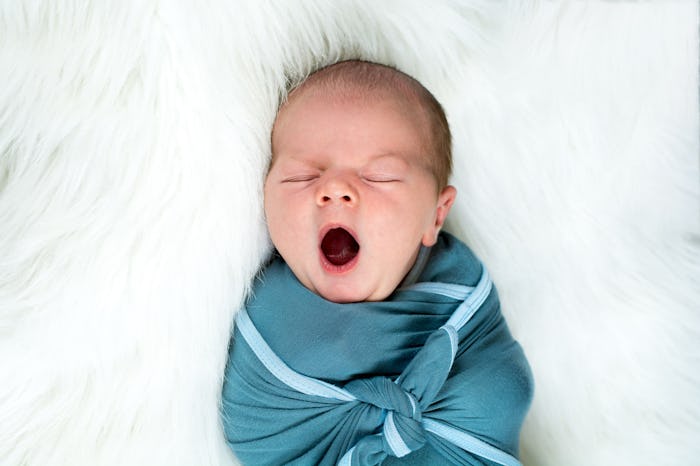Life

The Difference Between A Swaddle & A Sleep Sack
When my partner and I arrived at the hospital to meet our baby girl, we were utterly clueless. In fact, asking questions like, "What's the difference between a swaddle and a sleep sack?" would have made us sound far more in-touch with the whole parenting thing than we actually were. So, once we got home and settled we realized we had so much to learn and, as a result, started asking all of those questions new parents usually don't even think to consider asking before their little one comes into the world.
If you're feeling as clueless as I was feeling in those first few months, we'll start with the basics: swaddles and sleep sacks are, in fact, different. Swaddling, according to The Baby Sleep Site, extends the feeling of being in a womb for a baby. The site cites Dr. Harvey Kemp, author of The Happiest Baby on the Block: The New Way to Calm Crying and Help Your Baby Sleep Longer, who claims "babies actually need more time in the womb (a fourth trimester), but if they had that time, they’d never get through the birth canal because their head would get too big." The American Academy of Pediatrics (AAP) suggest that, when done correctly, swaddling can be an effective technique to help calm infants and promote sleep.
Many parents report their baby seems to hate the swaddle initially, and cry more vigorously when they're swaddled. Unfortunately, that's when most parents give up swaddling and sacrifice a lot of potential sleep in the process. According to the sleep website Precious Little Sleep, parents should be swaddling their newborns and babies will eventually be calmed by swaddling rather than riled up.
Among other positive reasons for powering through any initial swaddling difficulties, the practice can help promote neuromuscular development and keeps babies from startling themselves awake. Once your baby gets strong enough to start breaking out of the swaddle, however, there are some great products you can purchase that rely heavily on very sticky velcro to keep your baby snug as a bug in their swaddle. When babies start to have a more regular sleep schedule, swaddling for naps and overnight can help them calm down and fall asleep.
Take note that when your baby can roll over on their own, swaddling is no longer safe for your baby. The baby Sleep Site suggest the average age to stop swaddling your baby is around 3 or 4 months old, although it's not uncommon for babies to be swaddled when they are 6, 7, 8, even 9 months old. And this, my friends, is when the sleep sack comes into play.
When your baby outgrows their swaddle, invest in a few sleep sacks. They provide a safe substitute for blankets when your baby is too young for loose fabric around them due to Sudden Infant Death Syndrome (SIDS) risks. They also provide a cozy cocoon that can help your baby feel secure, even when they've had to retire the swaddle. There are even products that can help you transition your baby from the swaddle to the sleep sack, proving somewhat of an in-between version to help your baby through the process.
The key thing to know about both sleep sacks and swaddles is that they can mean good sleep for your baby (and, in turn, yourself). Personally, my partner and I had a theory with our daughter, and subsequent foster babies, that was essentially as follows: when in doubt, and depending on their age, help your baby get cozy (while adhering to the aforementioned sleep guidelines) and they'll sleep soundly. Honestly, it worked like a charm.